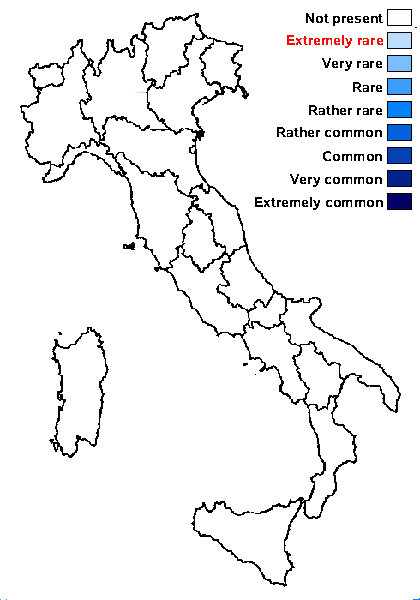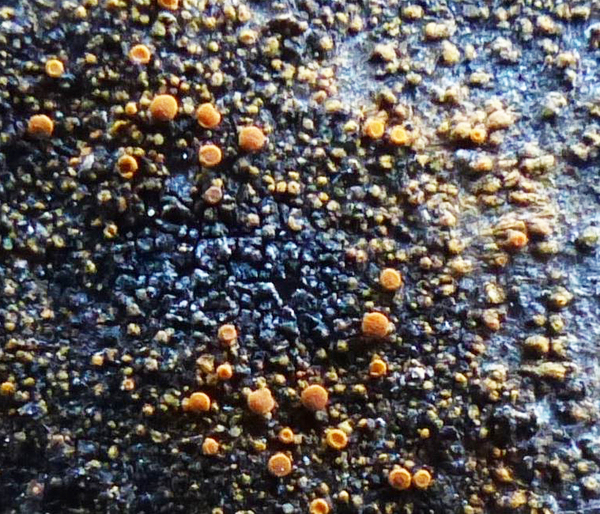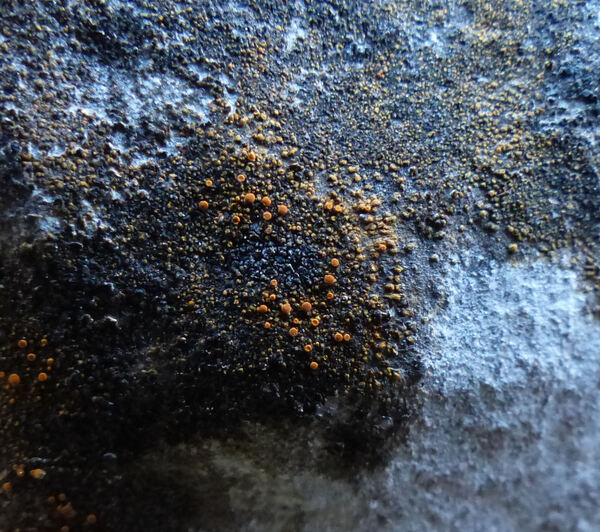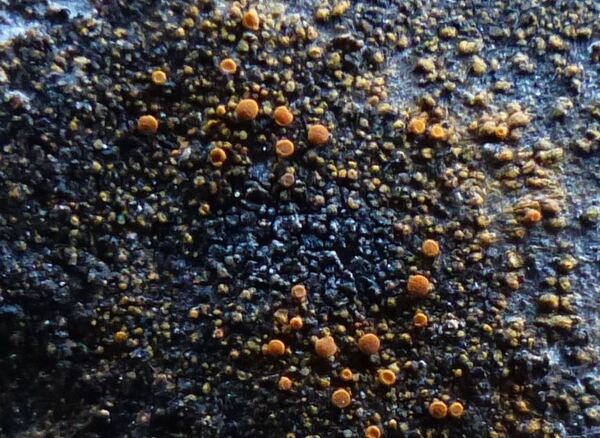Verrucula polycarparia Nav.-Ros. & Cl. Roux
in Navarro-Rosinés & al., Bull. Soc. linn. Provence, 58: 163, 2007.
Synonyms:
Distribution: N - VG (vidi!).
Description: Thallus crustose, areolate, forming 2-7 mm wide patches on the thalli of Flavoplaca polycarpa. Areoles small, (0.2-)0.3-0.6(-0.8) mm wide, 0.1-0.2 mm thick, irregularly polygonal to rounded, flat to convex, grey to grey brown, usually darker at margins, not or only weakly pruinose. Cortex 8-15 μm thick, of 1-2 layers of pale brown cells, often covered by an epinecral layer; medulla white, with many large crystals, I-. Perithecia black, 0.1-0.2 mm across, globose, immersed. Involucrellum absent; exciple paraplectenchymatous, colourless except around the ostiole; hymenium colourless, I+ reddish; hamathecium of periphyses along the ostiolar channel, pseudoparaphyses in upper part of the perithecium, and paraphyses disappearing early. Asci 8-spored, clavate, bitunicate, with a thin tholus reacting I-, Verrucaria-type. Ascospores 1-celled, hyaline, narrowly ellipsoid, 12-18 x 4-6(-7.5) μm, 2.1-3.4 times as long as wide. Pycnidia unknown. Photobiont chlorococcoid. Spot tests: K-, C-, KC-, P-, UV-. Chemistry: without lichen substances.Note: a lichenicolous lichen growing on the thalli of Flavoplaca polycarpa; recently-described and probably more widespread in Italy.
Growth form: Crustose
Substrata: rocks
Photobiont: green algae other than Trentepohlia
Reproductive strategy: mainly sexual
paras Flavoplaca polycarpa
Commonnes-rarity: (info)
Alpine belt: absent
Subalpine belt: absent
Oromediterranean belt: absent
Montane belt: extremely rare
Submediterranean belt: very rare
Padanian area: absent
Humid submediterranean belt: very rare
Humid mediterranean belt: absent
Dry mediterranean belt: absent

Predictive model
Growth form: Crustose
Substrata: rocks
Photobiont: green algae other than Trentepohlia
Reproductive strategy: mainly sexual
paras Flavoplaca polycarpa
Commonnes-rarity: (info)
Alpine belt: absent
Subalpine belt: absent
Oromediterranean belt: absent
Montane belt: extremely rare
Submediterranean belt: very rare
Padanian area: absent
Humid submediterranean belt: very rare
Humid mediterranean belt: absent
Dry mediterranean belt: absent

Predictive model
 Index Fungorum
Index Fungorum
 GBIF
GBIF





